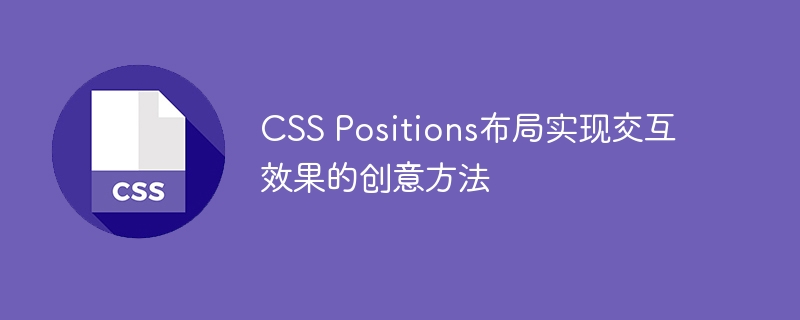

Creative method of CSS Positions layout to achieve interactive effects
With the continuous development of Web technology, users have higher and higher requirements for the interactivity of web pages. In addition to simple clicks and scrolling, designers have also begun to achieve richer interactive effects through CSS Positions layout. This article will introduce some creative methods and give specific code examples.
.sidebar {
position: sticky;
top: 0;
z-index: 999;
}.container {
position: relative;
}
.image {
position: absolute;
top: 0;
left: 0;
z-index: 1;
}
.image:hover {
transform: scale(1.5);
transition: transform 0.3s ease-in-out;
}.container {
position: relative;
height: 100vh;
overflow: hidden;
}
.background-image {
position: absolute;
top: 0;
left: 0;
width: 100%;
height: 100%;
background-image: url("image.jpg");
background-size: cover;
background-position: 50% 50%;
transform: translate(0%, -50%);
}Through the above examples, we can see that the interactive effects achieved using CSS Positions layout are so rich and diverse. These creative methods can not only add dynamic effects to web pages, but also improve the user experience. Of course, the above are just some of the examples. With technological changes and innovations, we can also achieve more stunning interactive effects through CSS Positions layout.
To summarize, this article shows the creative method of CSS Positions layout to achieve interactive effects, and gives specific code examples. Through these methods, we can add interactive effects such as ceiling sidebars, image overlays, and parallax scrolling to web pages to improve the user experience.
(The above example code is for reference only and should be adjusted according to actual needs)
The above is the detailed content of Creative ways to achieve interactive effects with CSS Positions layout. For more information, please follow other related articles on the PHP Chinese website!